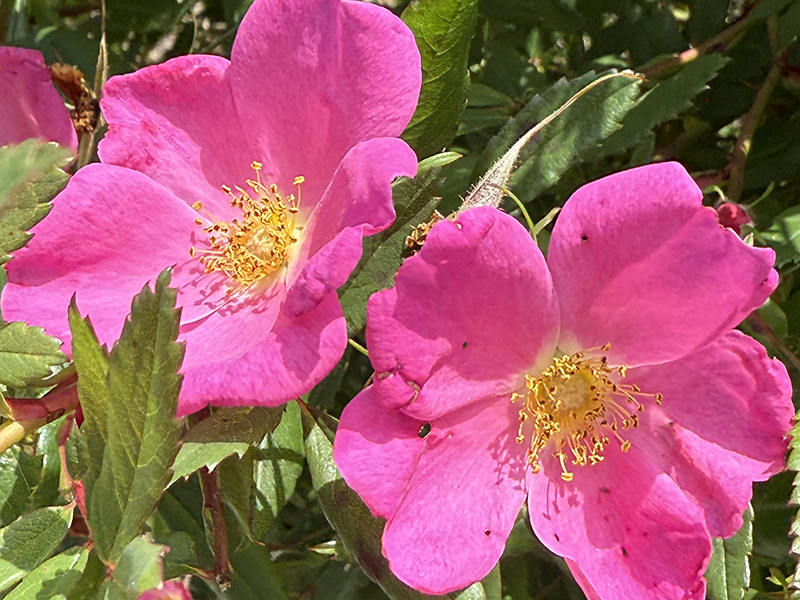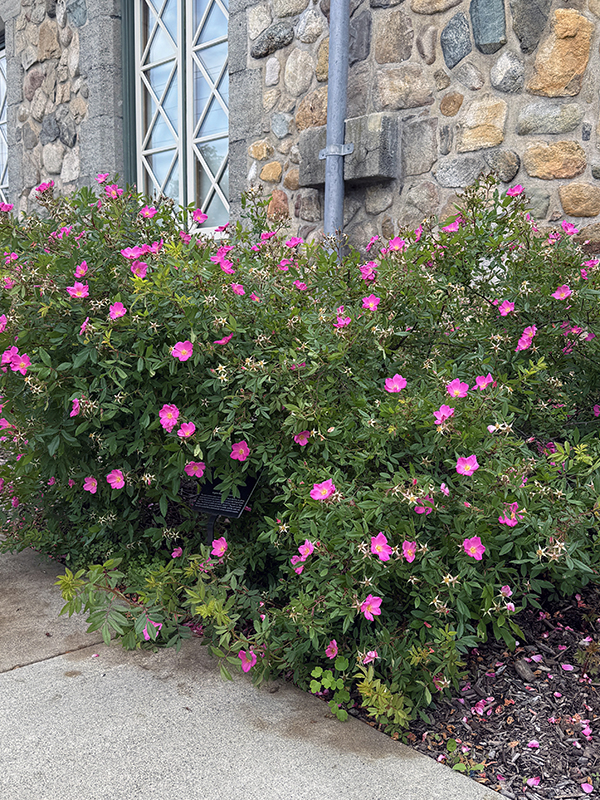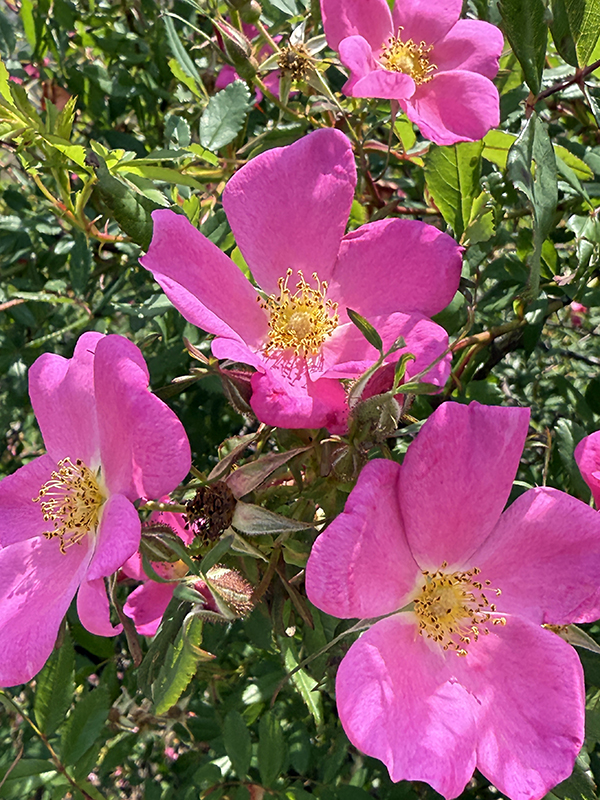
June 20, 2025| Education, Environment
By: Laurie and Marty Kane
If you stop by our office at the historic Lake Hopatcong Station, you may notice the fragrant pink flowers of the Virginia rose (Rosa virginiana) currently blooming in front of the building. The most common native rose in eastern North America, Virginia rose, flowers from June to August. The open blooms offer easy access to nectar and pollen for native bees, honeybees, butterflies, and beneficial predatory insects that help control garden pests. These flowers are followed by small, bright “rose hips” that are rich in vitamin C and can be used to make jams and tea.
 |
 |
The glossy green leaves of the Virginia rose turn brilliant shades of purple, crimson, and even yellow in fall, providing visual interest later in the season. Native Americans used both the roots and fruit for various medicinal remedies, including those for digestive health and skin care. This hardy shrub grows 4 to 6 feet tall and spreads quickly (we are constantly pulling out runners!), so be sure to plant it in a suitable spot in your garden. It grows well in full sun to partial shade and tolerates a wide range of soil conditions.
Did you know that the week of June 16–22 is Pollinator Week? This annual celebration raises awareness of the vital role pollinators - including bees, butterflies, moths, bats, and hummingbirds - play in sustaining our ecosystems and natural resources. Planting pollinator-friendly native plants is an excellent way to help protect these helpful creatures and promote a healthier environment. You can learn more about pollinators and Pollinator Week at Pollinator Partnership: www.pollinator.org.
We invite you to visit our native plant gardens at 125 Landing Road, Landing, NJ, to see these buzzworthy blooms. We hope you’ll be inspired to incorporate native plants into your yard or garden, supporting local wildlife and contributing to a healthier environment!